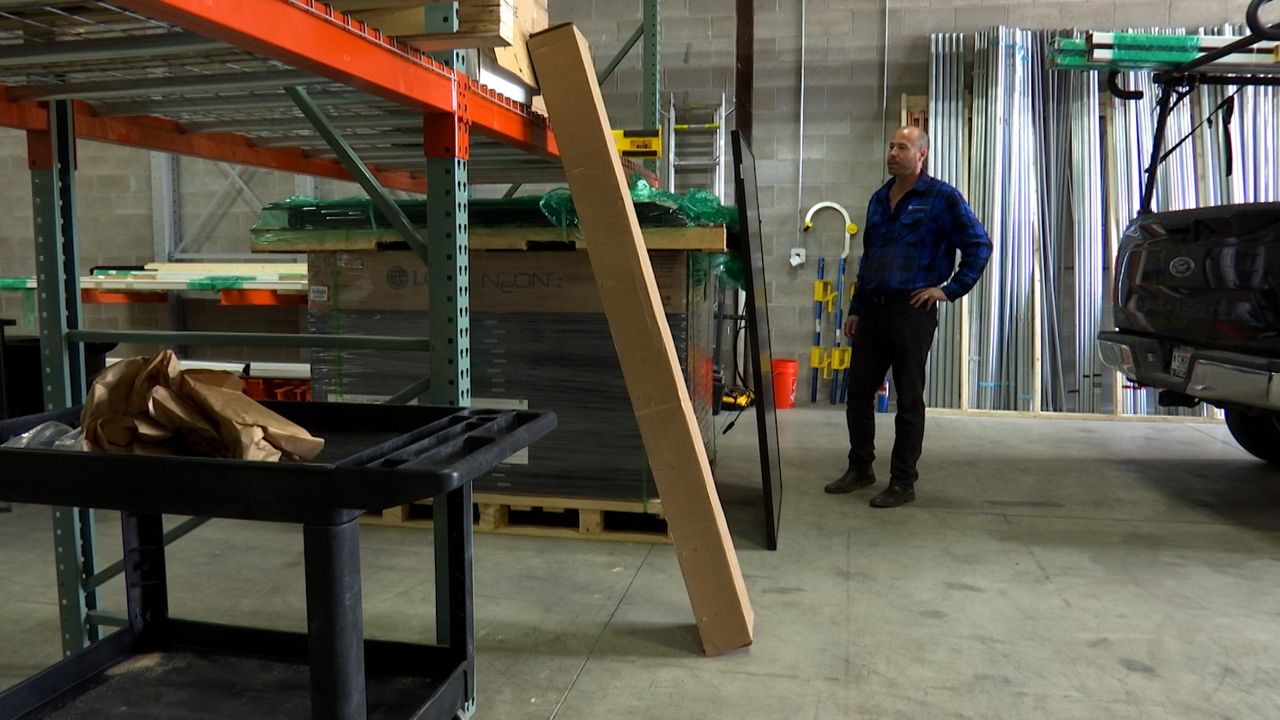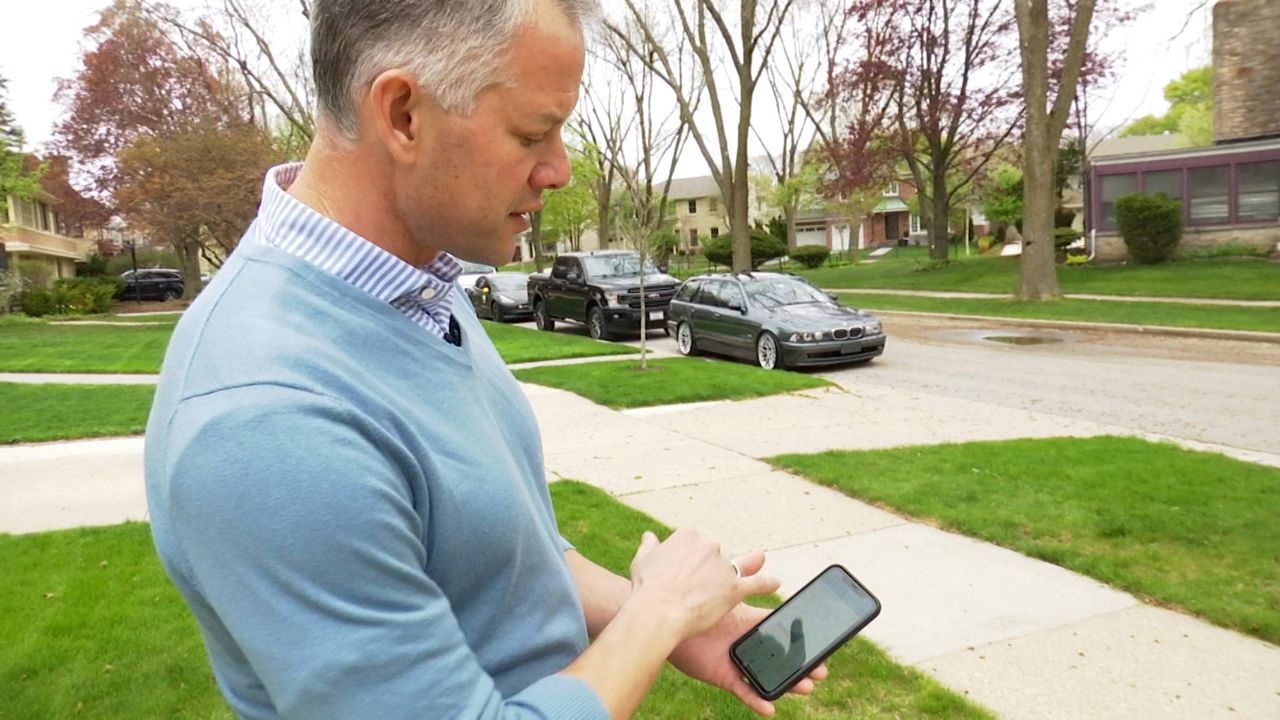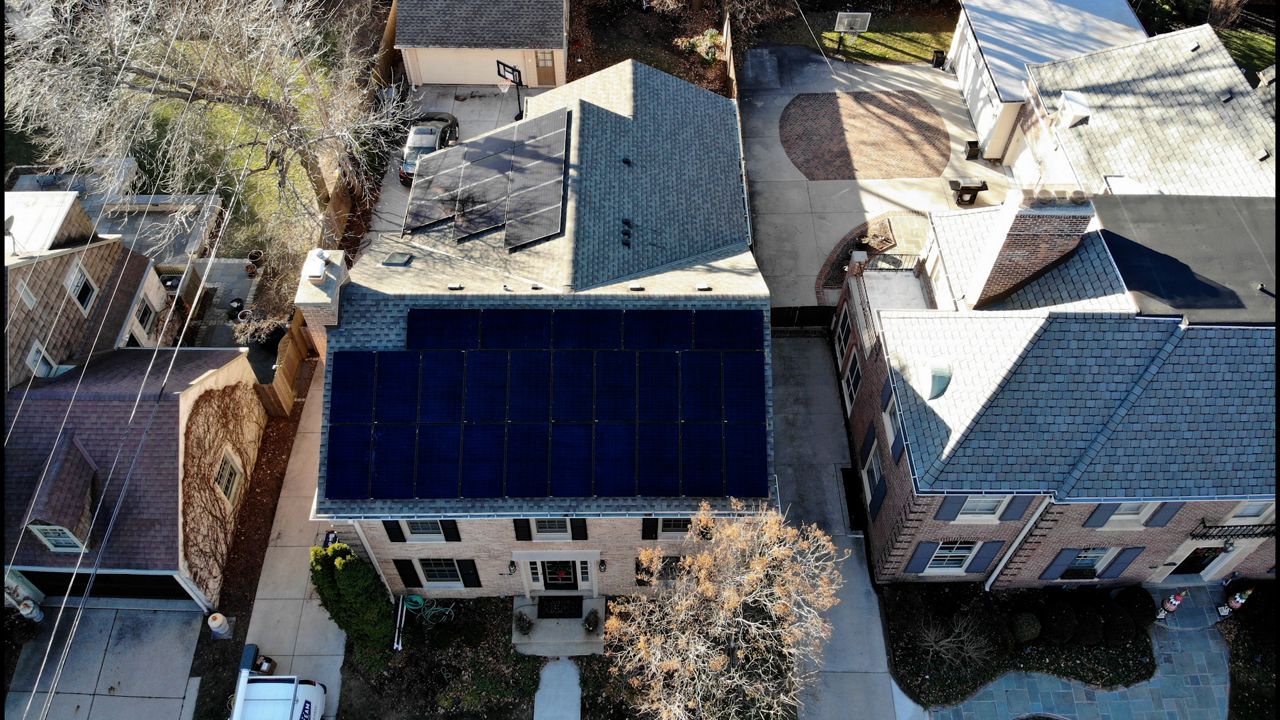MILWAUKEE— When Sun Badger Solar launched in 2018, they had four employees, and co-founder Trevor Sumner could tell you where each of their solar panel installations were.
The company looks much different now.
They are now in four states, with 72 employees, and have installed more than 1,000 solar arrays.
“The last few years have been a whirlwind of fun and growth and learning a lot of new things really, really quickly,” Sumner said.
Sun Badger Solar is headquartered in Milwaukee; they primarily operate in the midwest— Wisconsin, Illinois, Minnesota, and Florida. Sumner said the midwestern solar market started slower than the coastal one, but it has grown quickly lately.
“People in the midwest, they're a different type of customer,” Sumner said. “They are independent, they like the idea of resiliency and independence from the utility company so the interest has just really increased every year.”

Renew Wisconsin, an agency that advocates for renewable energy around the state, has noticed a boom in solar installations.
“Solar is becoming extremely popular on all levels; solar is especially scaleable,” said Sam Dunaiski, the distributed resources director for Renew Wisconsin.
Dunaiski said there are a number of reasons for the popularity. He said one is the efficiency of panels now compared to just a few years ago.
“Just in my three years here I've seen the wattage, or the amount of energy that each of those panels can produce, go from about 300 watts each to about 400 or 450 watts each,” Dunaiski said.
Dunaiski also said prices have come down for installations tremendously in the past decade.
“The prices have come down anywhere from about 75% to 90%,” Dunaiski said.
Part of that decrease is because of the efficiency. Dunaiski said since eight panels can now produce the same electricity that 20 did a few years back, the installations are naturally cheaper.
Dunaiski points to a state solar rebate program called Focus On Energy. He said the program typically has 700 applications per year— last year they had more than 2,000 just for residential solar installations.
“Of course, a lot of folks don't apply for that rebate. Some of them don't know about it. Some of them don't qualify as well,” Dunaiski said. “But it's a very good indicator of where the solar market, especially on the residential side, has gone just in the last 12 to 24 months or so.”
There is also a federal tax credit to reimburse residential solar installations up to 26% through the end of 2022. That's reduced to 22% in 2023, and without further federal action it will go away completely after that.
“From a financial standpoint, the federal government is giving you the most back now that you can anticipate,” Sumner said.
Jud Snyder lives in the Milwaukee area and had Sun Badger Solar install an array on his roof last year. He said his family decided to do it for a number of reasons.
“Primarily one really was environmental sustainability,” Snyder said. “At the same time the financial aspect makes a difference as well.”

Snyder said every month since March his house has produced more energy than it used.
The power from his array goes into the grid, and at the end of the month not only does he not have an electric bill, but he's getting money back from the utility.
“If you produce more than you use, they pay you for it,” Snyder said. “It's not a huge amount they pay you less than you would pay for electricity.”
Sumner said that's Sun Badger's goal for their customers: To not have an electric bill.
He also said the company finances customers, sometimes for as low as a .99% interest rate.
“Many times we can get the cost of solar to be less than what their monthly electric bill is,” Sumner said.
Sun Badger Solar has also partnered with Habitat For Humanity, pledging $250 per installation to the company, and looking to install arrays on donated homes through the nonprofit.
“Our staff is anxiously awaiting the time when they can get out with hammers and take a Saturday and Sunday to build a Habitat home,” Sumner said.

Sumner said people interested in a residential solar array should research what they want and talk to multiple companies. Renew Wisconsin also recommends talking to multiple companies, getting a few quotes and making sure that the company you go with is the right fit.
“While the price has come down a lot it's still a significant investment and we want to make sure that people are getting exactly what they want,” Dunaiski said.
Snyder said his only regret in his installation so far is that he didn't do it sooner.
“Once you do it you just kind of turn it on and you don't think about it anymore except for the fact that you don't get an electric bill and you know you're not using coal or you're not using those types of energies to power your house anymore,” Snyder said. “It's a good feeling.”
